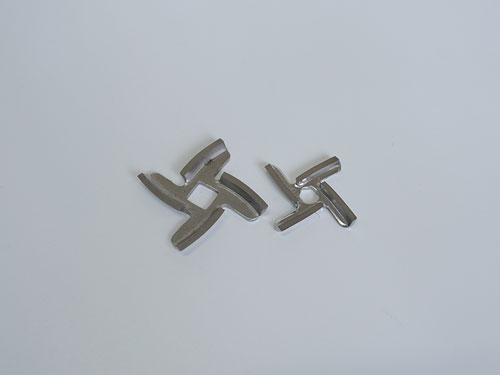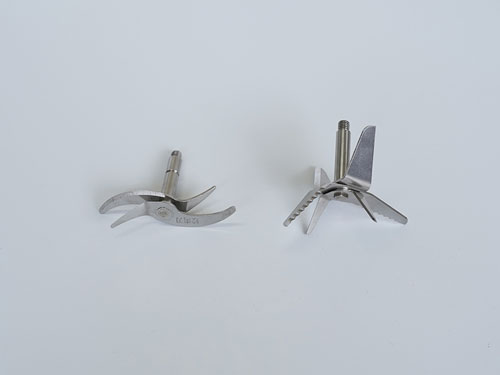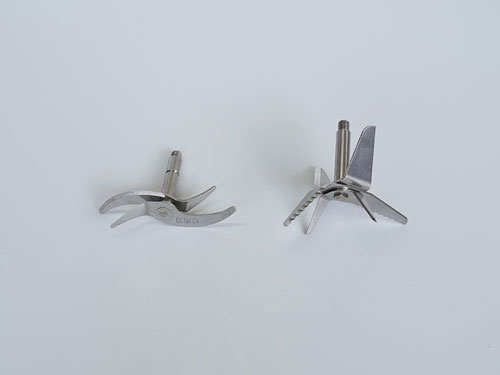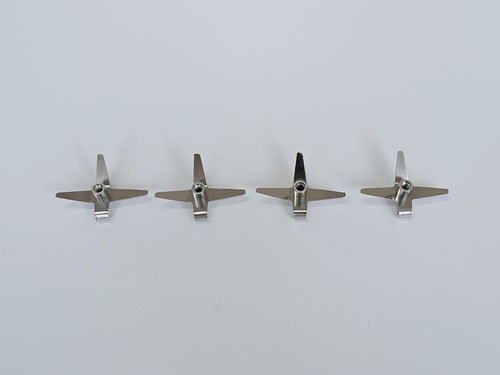

Some meat grinding blades are processed by milling, and the way to improve milling is to optimize the milling strategy. When programming, users need to consider the cutting methods of cutting tools and meat grinding blades. Usually, when the milling cutter simply cuts into the workpiece, there is a significant impact noise when the blade exits the cutting process, which is caused by the thick chips generated by the milling cutter. Due to the significant impact on the meat grinding blade, it often causes vibration, generates tensile stress, and shortens the service life of the processing tool.

Another good method is to use the rolling cutting method, which increases the offset distance between the tool and the workpiece without reducing the feed rate and cutting speed. This means that the tool needs to rotate clockwise to ensure machining in a clockwise manner. The chips formed by this method become thicker to thinner, which can reduce vibration and tensile stress acting on the tool, and transfer more cutting heat to the chips. By changing the way the milling cutter cuts into the meat cutter blade each time, the tool life can be extended.






.jpg)